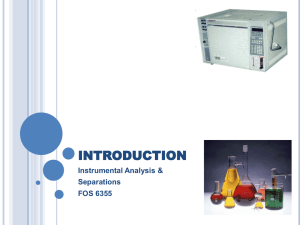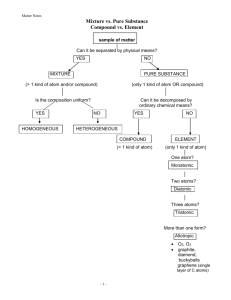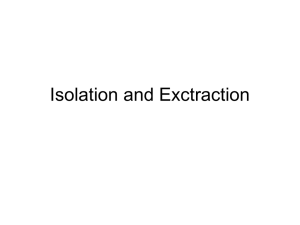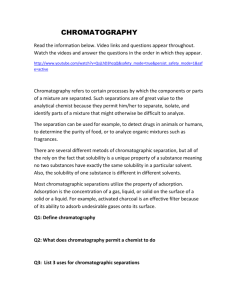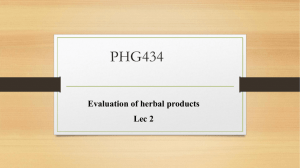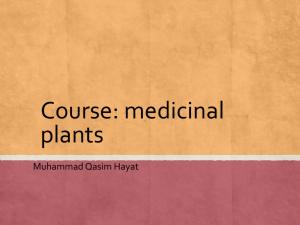Pharmacognosy
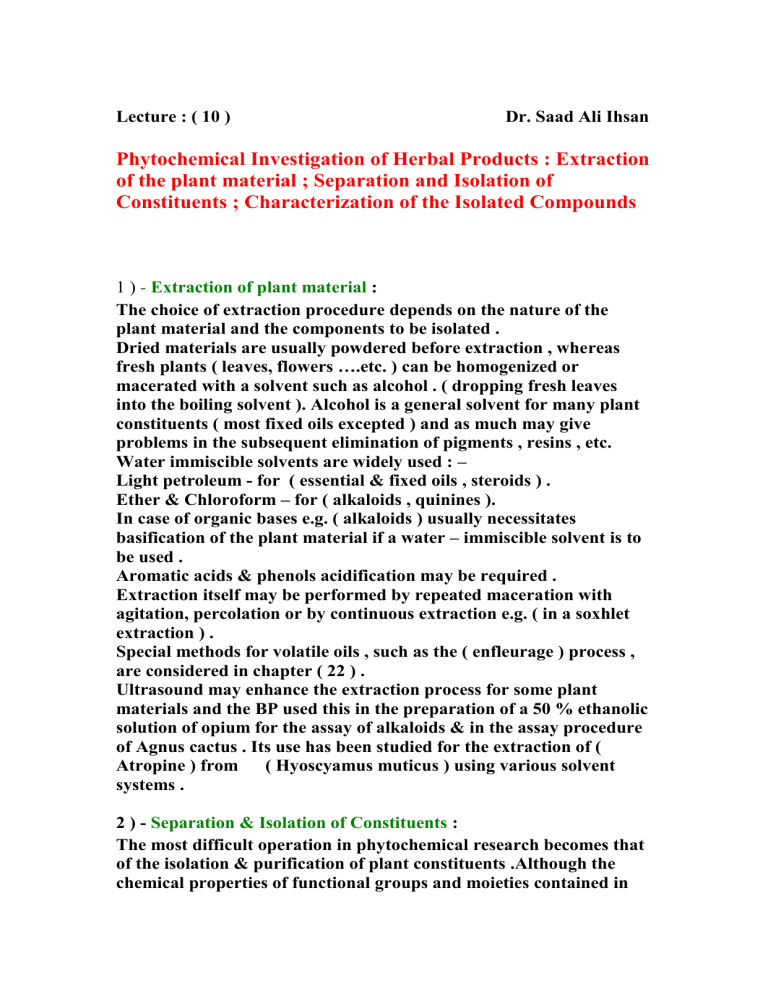
Lecture : ( 10 ) Dr. Saad Ali Ihsan
Phytochemical Investigation of Herbal Products : Extraction of the plant material ; Separation and Isolation of
Constituents ; Characterization of the Isolated Compounds
1 ) - Extraction of plant material :
The choice of extraction procedure depends on the nature of the plant material and the components to be isolated .
Dried materials are usually powdered before extraction , whereas fresh plants ( leaves, flowers ….etc. ) can be homogenized or macerated with a solvent such as alcohol . ( dropping fresh leaves into the boiling solvent ). Alcohol is a general solvent for many plant constituents ( most fixed oils excepted ) and as much may give problems in the subsequent elimination of pigments , resins , etc.
Water immiscible solvents are widely used : –
Light petroleum - for ( essential & fixed oils , steroids ) .
Ether & Chloroform – for ( alkaloids , quinines ).
In case of organic bases e.g. ( alkaloids ) usually necessitates basification of the plant material if a water – immiscible solvent is to be used .
Aromatic acids & phenols acidification may be required .
Extraction itself may be performed by repeated maceration with agitation, percolation or by continuous extraction e.g. ( in a soxhlet extraction ) .
Special methods for volatile oils , such as the ( enfleurage ) process , are considered in chapter ( 22 ) .
Ultrasound may enhance the extraction process for some plant materials and the BP used this in the preparation of a 50 % ethanolic solution of opium for the assay of alkaloids & in the assay procedure of Agnus cactus . Its use has been studied for the extraction of (
Atropine ) from ( Hyoscyamus muticus ) using various solvent systems .
2 ) - Separation & Isolation of Constituents :
The most difficult operation in phytochemical research becomes that of the isolation & purification of plant constituents .Although the chemical properties of functional groups and moieties contained in
compounds , such as , acids , aldehydes , phenols & alkaloids can be exploited for their separation from other materials , such methods might not fractionate components of the same class , it is in this later area that new techniques are constantly being developed .
Sublimation : -
Sublimation may sometimes be possible on the whole drug as in the isolation of ( Caffeine ) from tea or for the purification of materials present in a crude extract . Modern equipment employs low pressures with a strict control of temperature .
Distillation : -
Fractional distillation has been widely used for the isolation of the components of volatile oils . Gas chromatography is now used to separate minor components of a mixture in a pure state .
Steam distillation is much used to isolate volatile oils and hydrocyanic acid from plant material .
Fractional Liberation : -
Some groups of compounds lend themselves to fractional liberation from a mixture , ex : a mixture of alkaloid salts in aqueous solution when treated with aliquots of alkali , will give first the weakest base in the free state followed by base liberation in ascending order of basicity . If the mixture is shaken with an organic solvent after each addition , then a fractionated series of bases will be obtained . A similar scheme can be used for organic acids soluble in water – immiscible solvents ; in this case , starting with a mixture of the acid salts , it is possible to fractionally liberate the acids by addition of mineral acids .
Fractional Crystallization :-
A method much used in traditional isolations and still valuable for the resolution of often otherwise intractable mixtures . The method exploits the differences in solubility of the components of a mixture in a particular solvent . Frequently derivatives of the particular components are employed ( Picrates of alkaloids , osazones of sugars
) .
Adsorption Chromatography : -
1- Partition Chromatography
2- Partition Chromatography on paper
3- HPLC
4- TLC
5- Counter – Current Chromatography
6- GLC
7- Gel – Filtration Chromatography
8- Electro chromatography
9- Affinity Chromatography
All above kinds of Chromatography cited in the Chromatography lecture .
3 ) - Characterization of Isolated Compounds : -
Chemists are coming to rely more & more on the use of physical techniques to establish structures of new compounds & to identify known compounds in plant sources . Ultraviolet ( U.V. ) , infrared , mass & nuclear magnetic resonance ( NMR ) spectroscopy together with X- crystallographic & optical rotary dispersion methods have all played a significant role in these developments , various modifications of mass spectrometry ( MS ) have become of increasing importance for the structural characterization & determination of the active constituents of plants .
*********** ************************************************


